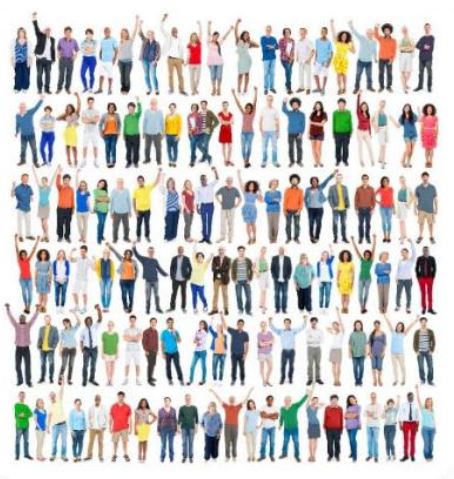Diversifying the Dutch municipality

date: 09/07/2020
Already 26 municipalities have signed the Dutch Charter since its introduction in 2015. Amsterdam, Den Haag, Rotterdam and Utrecht (the Grant 4) as the precursors. The 355 local governments in the Netherlands are responsible for 168.500 jobs in total (2019). Since they are significant local employers, we hosted a Charter meeting exclusively for municipalities in January 2018. This Charter meeting then resulted in a leaflet under the name ‘diversity within the municipality staff’.
What makes these municipalities rather a special signatory is that they, on the one hand have to aim at creating an inclusive community culture and on the other hand, that they have to aim at diversifying and strive for inclusion within their own government body/organization. Although both roads are equally important, the Dutch Charter suggest to start at the internal organization to set a strong example outwards. The local government is after all a mirror for its local community and organizations. Also, research has shown that the business case for local governments increases performance, reduces bureaucracy, attracts and makes better use of talent, enhances levels of transparent and clear decision-making, increases recognisability and thus sets a strong example outward.[1] In the end a diverse staff knows how to adapt to the diversity of its local residents, knows how to cope with a variety of questions and issues and improves contact and communication, which improves the overall level of service.
Collective Labour Agreement for people with disabilities
Two short examples in the field of the diversity domains show the important role which the Charter can play locally: municipalities have a mission statement aimed at the in-flow of employees with disabilities. As part of a job agreement, they have to create extra jobs for people with disabilities and have a responsibility to create enough workshop places within their organization and in local companies for people with disabilities. This is agreed in the Municipalities Collective Labour Agreement of July 2017. The business case for diversity and the Charter helps local governments in reaching this mission statement, through developing strategic goals and creating awareness of the loss of talent when this group stays unemployed. Also the Charter can help the municipality to use the argument of social return to ensure that investments made by the municipality to the local businesses, will generate social return for the municipality and community, for example by creating jobs for people with disabilities. In our last mailing we sketched the example of our newly launched ‘Amsterdam Diverse & Inclusion Desk’ (ADI), which is a cooperation between us and the local government of Amsterdam to foster more diversity and inclusion on the Amsterdam labour market. The ADI desk is now creating an infrastructure with local Amsterdam companies based on the argument of social return to in connecting Amsterdam based companies to groups of people with disabilities, migrant history and refugees who are looking for jobs.
Gender equality within the organization
In the case of gender equality, the annual municipal monitor[2] shows that municipalities are becoming more equality balanced. The percentage of female executives rose in 2019 to 43%. This proportion is the highest in the G4 local governments.
Municipalities with less than 20,000 inhabitants have the lowest proportion (36%). However, slightly more women than men enter the local government (58%) but in terms of contracts there a still more men than women working within municipalities.
In summary, more municipalities realize that their current levels of diverse population asks for new policies to better adapt to the new tensions in the local communities. They are looking for ways to create inclusive cities and to stimulate businesses in their social return. In this way they strive for more gender equality and jobs for people with disabilities. Signing the Charter helps these municipalities in creating a more diverse workforce that is better adapted to future challenges such as unemployment due to recession. Talent is also less wasted and discrimination and inequality countered, due to inclusive policy.
[1] Diversity at Work, 2018, diversity within the workforce of the municipality, https://diversiteitinbedrijf.nl/gemeenten/
[2] A&O fund municipalities, 2019, monitor staff, https://www.aeno.nl/uploads/Personeelsmonitor-2019.pdf
